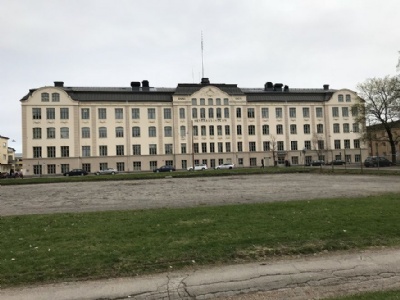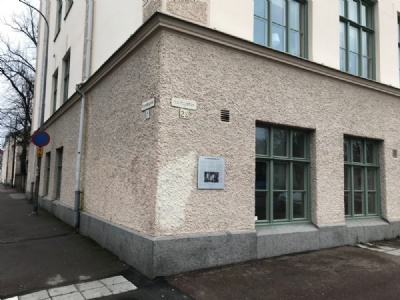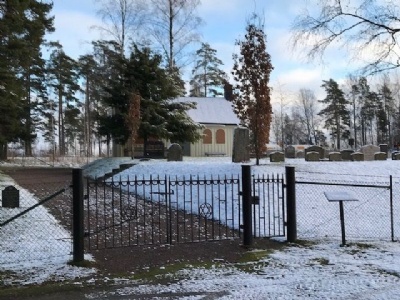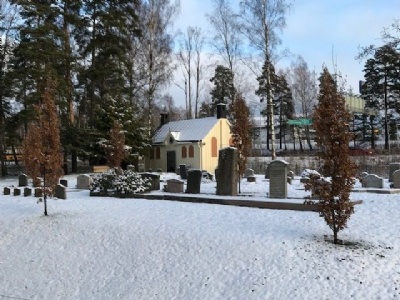Herrhagen School
At the end of the Second World War, the refugee crisis in war-torn Europe was a fact. One contributing factor was that the German concentration camps and other camps were overcrowded by prisoners from all corners of Europe. These were prisoners who were mostly exploited as slave workers in the German war industry. As the german retreated on all fronts, camps near the front were evacuated to camps further away. These were camps already filled to the breaking point and new prisoners contributed to further deteriorating the situation. Diseases could spread uninhibitedly and access to food and medicines was more or less non-existent. Nevertheless, the idea was on the German side that the evacuated prisoners would again be used for slave labour in the war industry.
Most people were aware that Germany was about to lose the war, even several high Nazi leaders understood that it was only a matter of time before the war was lost. One of these was SS chief, Heinrich Himmler, head of the German police and concentration camps. Another person also aware of this was the Swedish officer and diplomat, Folke Bernadotte. He had been negotiating with the Germans for the release of imprisoned Norwegian and Danish political prisoners for a few years. Bernadotte had also organised prisoner-of-war exchanges between Germany and allied countries in 1943 and 1944.
Bernadotte now saw an opportunity to extend his work to prisoners of other nationalities and not only political prisoners. Bernadotte made contact with Heinrich Himmler in February, 1945, and decided to evacuate first and foremost Scandinavian prisoners from German concentration camps and prisons around Germany. The Swedish government didn’t as long as the war continued to be officially part of Bernsdotte’s effort. The relief effort and evacuation were therefore placed under the leadership of the Red Cross. Officially, the action was Swedish, but it took place in close cooperation with both Norwegian and Danish representatives. But Swedish neutrality made the operation less politically sensitive.
At Bernadotte’s and the Red Cross’s disposal were about 250 people and around 75 buses painted white and decorated with a Red cross for the purpose. This is to avoid being identified as military targets. The buses drove around in war-torn Germany, picking up prisoners and bringing them to the Neuengamme concentration camp south of Hamburg. Himmler had placed parts of Neuengamme under the protection of the Red Cross and the camp was to serve as an assembly point for evacuated prisoners. There, the prisoners received first aid while waiting for further transport. From Neuengamme, the prisoners were then transferred to the Scandinavian countries. In total, the white buses evacuated about 20,000 prisoners during the two months of the operation, the majority coming from Scandinavia.
Sweden had committed itself accepting 27,000 refugees from the devastated Europe. Of these, about 200 ended up (or 300?) women from Bergen-Belsen in Karlstad and Herrhagens school at the end of July 1945, most of them were Polish Jewesses. They arrived by train and all were in bad health and some were taken by ambulance to the school, which had been quickly prepared to receive the refugees. The school was cordoned off, mainly because the risk of spreading contagious deseases (tuberculosis and typhoid). But it did not prevent curious locals to get a glimpse of the school, not infrequently to see some of the girls.
About 15 women died during the stay and these were buried in the Mosaic cemetery in Karlstad. The others were sent in early 1946 to other convalescent homes in Sweden. What happened to them later is uncertain. Returning to the homeland was usually not an option because there was neither a home nor any relatives to return to. About 15 – 20 people may have stayed in Karlstad for a shorter and longer period before they also moved on. But I think I know at least one woman stayed and married a local man. The hospital existed for about six months and then resumed its previous function as school.
Current status: Preserved with memorial tablets (2020).
Address: Karlagatan 28, 652 23 Karlstad.
Get there: Bus.
Follow up in books: Gilbert, Martin: The Holocaust: A History of the Jews of Europe During the Second World War (1987).





By 2020, the school is a municipal primary school up to sixth grade. Since 2008, there is a small memorial plaque on the facade with a brief information about the refugees. In 2020, another memorial plaque was set up about 400 meters from the school and is placed at the railway track where the refugees arrived. Interestingly, the plaque at the school mentions that there were about 300 women while the plaque at the railway mentions 200.